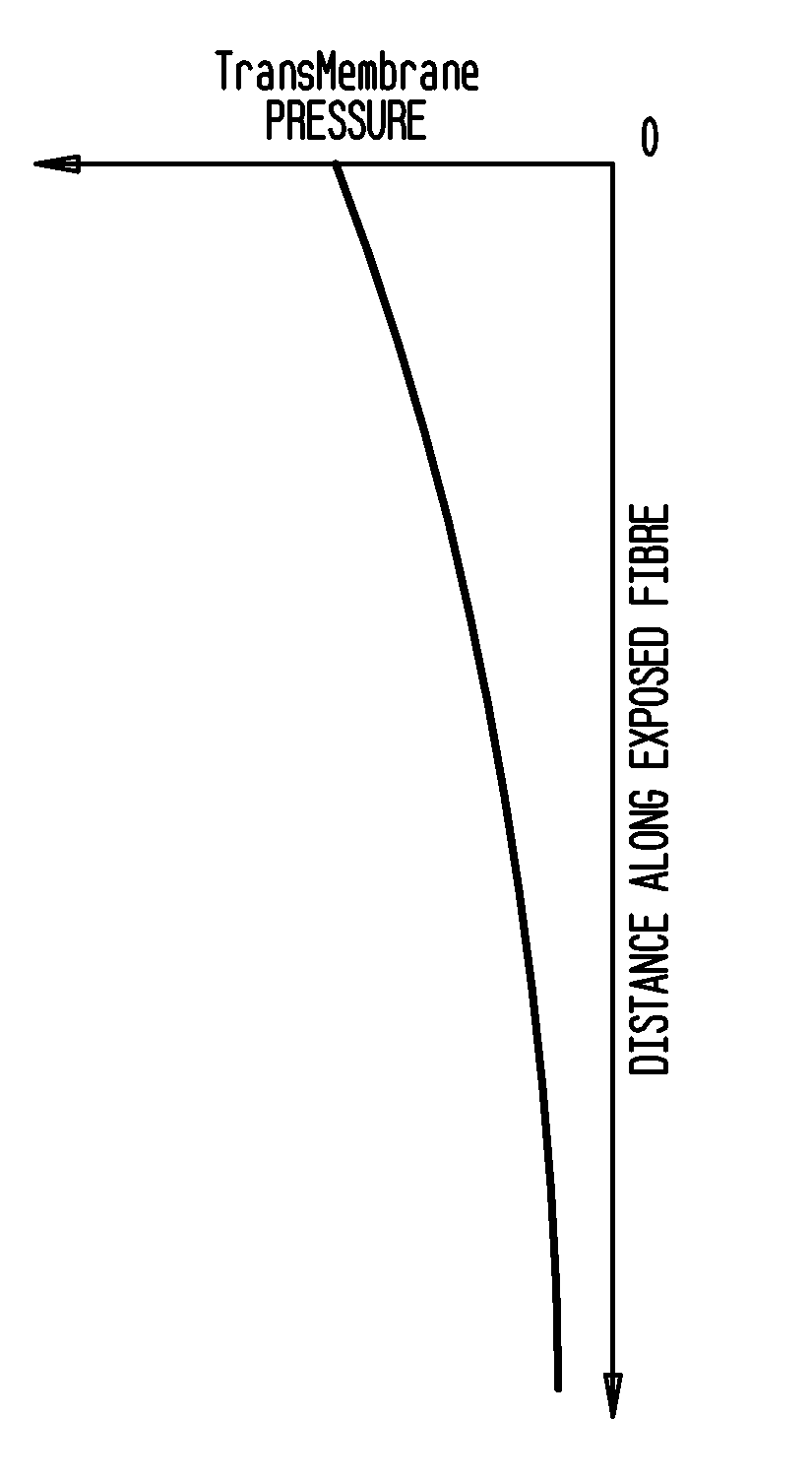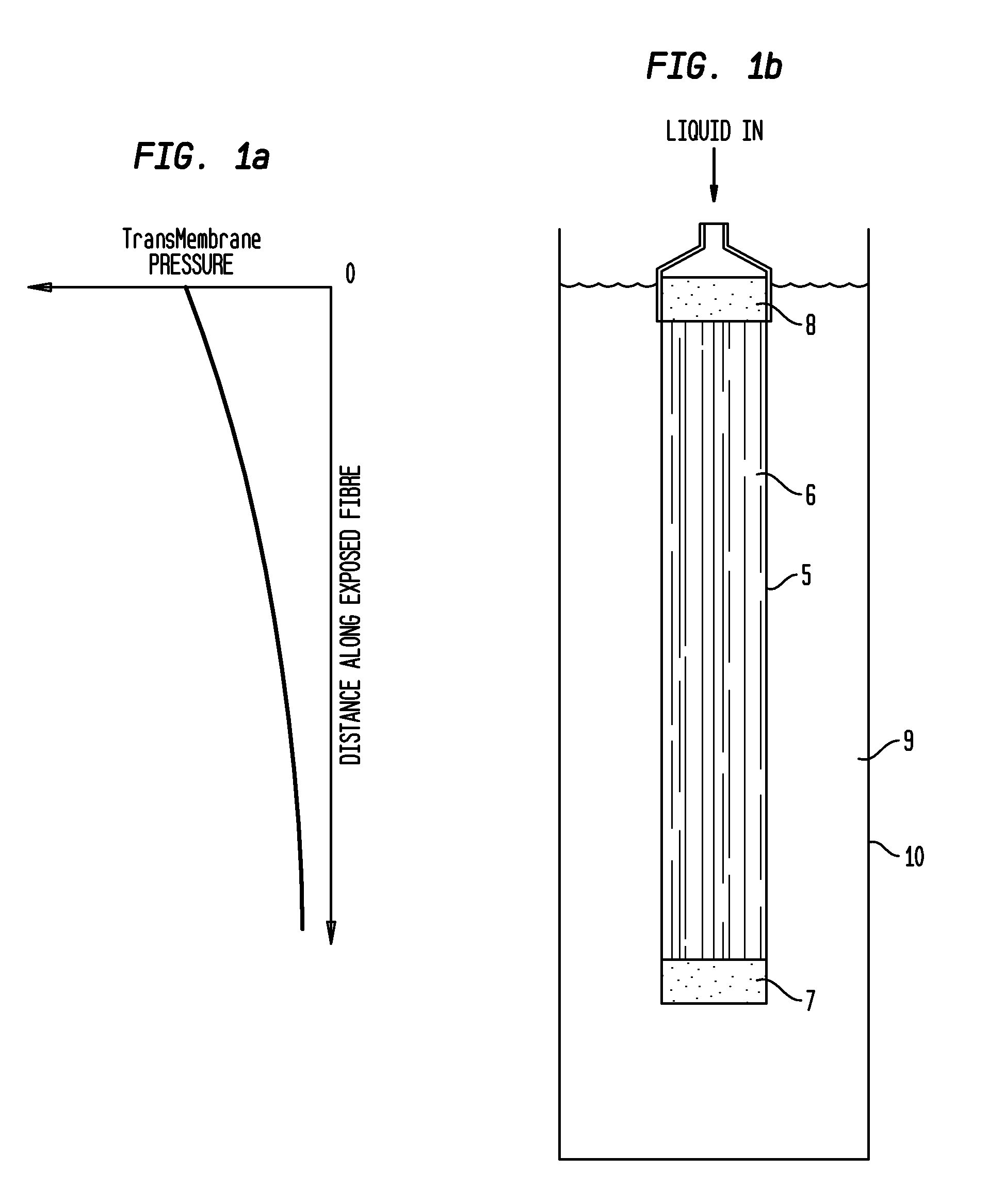Backwash and cleaning method
a technology of backwashing and cleaning method, which is applied in the field of solid concentration, can solve the problems of uneven backwashing along the length of the fibre membrane, uneven backwashing, and poor recovery of tmp at the fibres, and achieves the effects of less use, enhanced washing process, and more efficient chemical backwashing
- Summary
- Abstract
- Description
- Claims
- Application Information
AI Technical Summary
Benefits of technology
Problems solved by technology
Method used
Image
Examples
Embodiment Construction
[0056]Referring to FIGS. 1a and 1b, the graph shown in FIG. 1a illustrates the change in transmembrane pressure (TMP) as the distance from the application of pressure flow increases. FIG. 1b shows a membrane module 5 having a plurality of hollow fibre membranes 6. The fibre membranes 6 are closed at the lower end in a lower pot 7 and open at the upper end through upper pot 8. The module is immersed in liquid 9 contained in a vessel 10. In the case illustrated, pressurized liquid is applied to the open end of the fibre lumens 11 resulting in the TMP profile shown in FIG. 1a.
[0057]As noted above, in membranes with the fibre membranes 6 closed at one end, the pressure of liquid is highest at the point of application of the pressurized flow to the fibres lumens 11 and tapers off along the length of the membrane 6. This results in uneven backwashing and poor recovery of TMP at portions of the fibre membranes 6 remote from the backwash application point.
[0058]FIGS. 2a and 2b show a simil...
PUM
 Login to View More
Login to View More Abstract
Description
Claims
Application Information
 Login to View More
Login to View More - R&D
- Intellectual Property
- Life Sciences
- Materials
- Tech Scout
- Unparalleled Data Quality
- Higher Quality Content
- 60% Fewer Hallucinations
Browse by: Latest US Patents, China's latest patents, Technical Efficacy Thesaurus, Application Domain, Technology Topic, Popular Technical Reports.
© 2025 PatSnap. All rights reserved.Legal|Privacy policy|Modern Slavery Act Transparency Statement|Sitemap|About US| Contact US: help@patsnap.com



